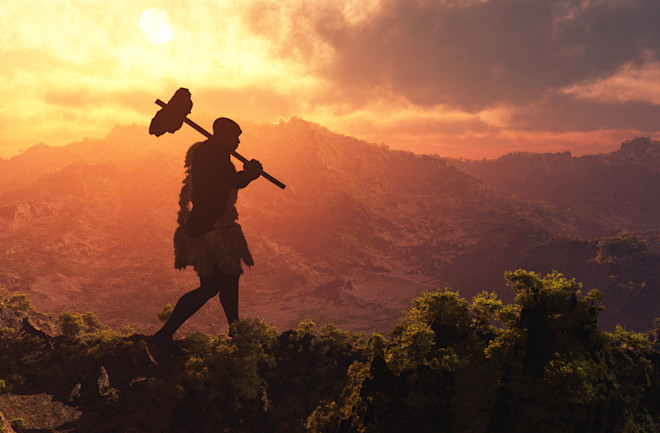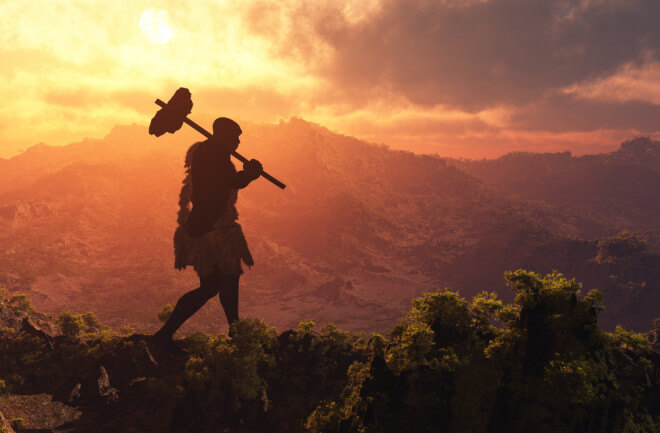Genetic research has uncovered ancient human lineages inside our own genomes. And there’s likely still more to find.

Our Hominin Ancestors
Research into ancient humans got a big boost around a decade ago, when scientists first sequenced the genomes of Neanderthals and Denisovans. For the first time, anthropologists were able to compare the genomes of both H. sapiens and other ancient humans to look for similarities. The evidence revealed clear signs of interbreeding — the human genome can contain stretches of DNA that match strongly with both the Neanderthal and Denisovan genomes.
While we know that humans contain DNA from both Neanderthals and Denisovans, the amounts vary. People whose ancestors come from Europe and Asia received about two percent of their DNA from Neanderthals. Denisovan DNA, by contrast, shows up only in people from Asia, where it can make up anywhere from a few to around five percent of their genomes.
Africans were long thought not to have any DNA from Neanderthals or Denisovans, as ancient humans acquired those genes only after leaving Africa. But a 2020 study picked out small amounts of Neanderthal DNA in people from Africa, contrary to that long-held assumption. It likely came from humans moving back to Africa from Europe or elsewhere, the authors say.
New fossils have also helped fill out the story in recent years. In 2018, scientists announced they’d found remains belonging to a young girl who was a Neanderthal-Denisovan hybrid. The specimen, called “Denisova 11” had a Neanderthal mother and a Denisovan father, and lived more than 50,000 years ago. A 2021 paper analyzing the oldest human DNA to date, found in Bacho Kiro cave in Bulgaria and dating to about 45,000 years ago, indicated the individuals had Neanderthal ancestors just a few generations back.
Comparisons of modern-day human DNA with the Denisovan genome have similarly indicated that our ancestors interbred with the ancient hominins. Studies of people of Asian and Pacific Islander descent today reveal Denisovan DNA in their genomes. Scientists think their ancestors intermingled with Denisovans sometime after migrating to the region tens of thousands of years ago. Those genes have proven beneficial in some cases. An analysis of a Denisovan jawbone found in a cave high on the Tibetan plateau revealed that modern-day Tibetans harbor a key gene, inherited from Denisovans, that allows their bodies to better deal with the punishing effects of altitude.
Genes from Neanderthals have also been linked to how our skins react to UV light, depression, allergies, myocardial infarction’s and other conditions. As we come to better understand both our own and other hominins’ DNA, we’ll likely discover more.
Genetic Ghosts
There are also signs that modern humans contain genes from unknown lineages of hominins. One study used sophisticated modeling techniques to sift through genomes and picked out genes from an unknown hominin in the Denisovan genome. Some of those genes were in turn passed on to humans, the authors say, though they’re unable to say who those ancient ancestors were.
Other research has found evidence that humans may have interbred with other hominin lineages in Africa at some point. A number of now-extinct branches of humans co-existed at one point on the continent, including Homo naledi and Homo heidelbergensis, and it’s possible they may have mated with our own ancestors at some point.
And though we know that humans interbred with Denisovans, recent research indicates that what we call Denisovans may actually have comprised several different lineages. If so, the Denisovan DNA in H. sapiens may have come from more than one distinct group
Even as we learn more about our ancient history, and about the groups of hominins that remain with us today at a genetic level, it’s worth remembering that not everything is set in stone. Our understanding of many facets of human history has changed in recent years, from when we left Africa to how many different groups of ancient humans existed. Some of what we think today may not hold up as new evidence comes to light. And further research may unearth entirely new dimensions of our past.
So, while we know that the DNA of ancient groups of humans lives on in us, we still can’t say for certain how much, or how many lineages it comes from. The only thing that’s certain is that there’s still much more to find out.
Please remember we all have different opinions, Think Before You Speak or Write Something that is cruel to Others. After all, We are only Humans. Wishing you clear skies and wide eyes. To share your experiences or just leave a comment there is a area below. Read or listen.
We are the change the world has been waiting for!
Have you witnessed an unidentified flying object?
You are not alone. Whether you think UFOs are black projects, extraterrestrial craft, something else altogether, or just don’t know, again, you are not alone!
Unconditional love. The road we all get to walk. Unconditional love is like the sun.
WE ARE THE DISCLOSURE !~ WE HAVE NEVER BEEN ALONE
Love and Regards,
Thank You,
Nancy Thames
Source: Nathaniel Scharping


